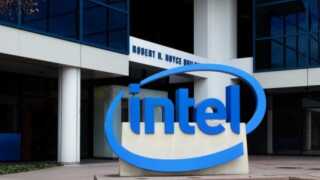Sitting at the intersection of telecoms and content as Niantic’s global head of telco partnerships, Sarah Gilarsky sees both sides of the telco-content provider relationship: the challenges of deploying network and infrastructure and the need to provide new and exciting content-led experiences.
Niantic is primarily known as the developer and publisher of Pokémon GO, the augmented reality (AR) mobile game that took the world by storm in 2016. Since then, it has published the AR mobile games Pikmin Bloom, NBA All-World, Peridot and Marvel World of Heroes. But there is another side to its business: a platform division that, according to Gilarsky, involves “taking all that technology that we use to make our games and opening it up to all the developers, brands, partners, people who want to create those kinds of location-based AR experiences”.
“I manage our telecom partnerships globally,” says Gilarsky. “The reason why we want to partner with telecom companies is that they’re really critical for both sides of [the platform] business. All of our goals at Niantic and those of our telecoms partners are all headed in the same direction.
“We all want customers to have really fantastic experiences. We want those experiences to work really well from a network perspective,” she says. “Especially when it comes to things like live events, which are really important to our players in our communities.”
Metaverse goes outside
Gilarsky says that telcos are building the infrastructure that will enable what folks at Niantic call the “real-world metaverse”. The telcos are creating networks and investing capex, “and we [Niantic] are the ones who, at some point in the future, are going to want to be taking advantage of all of those advancements in networks to create brand new kinds of experiences for both our games and for our platform”.
One of the ways Niantic collaborates with telco partners is through the promoting and marketing of its games, by creating differentiated offerings for their partner telcos’ respective customers.
“A lot of our telecoms partners are heavily invested in the content space, enabling really interesting new experiences or giving their customers unique content offerings that’ll help them differentiate from their competitors,” says Gilarsky.
On the platform side of Niantic’s business, this involves “testing, building, exploring together”, which primarily manifesting as 5G demos and mini content experiences on live networks that enable both parties to learn, collect data and see how different types of content perform in different network environments.
As Niantic’s platform only launched in November 2021, partnerships between the company and telcos in this side of the business are still in their early stages. And the publisher only unveiled its Lightship Visual Positioning System in May. It enables developers to determine the position and orientation of their users and anchor AR content with centimetre-level precision. Gilarsky says the system, which is still in beta, is the “gold standard” in AR.
Gilarsky adds that Niantic will be able to make use of the 5G networks, edge and 5G devices carriers are building out and adopting.
“The more they build out that infrastructure, the more we’re going to be able to start to take advantage of the additional bandwidth and the lower latencies that will be made available,” says Gilarsky. However, she recognises that there is no “perfect use case or killer app for 5G”, and that it will take time for people to realise the benefits of the technology.
Wireless world
“Infrastructure” is a broad term, encompassing everything from subsea, fibre, data centres, towers, small cells, and everything in-between. But Niantic is most interested in the wireless space.
“All of [Niantic’s] experiences are out of the home. They’re meant to be out there in the world,” she says. “So that means that all things related to wireless out-of-home networks and data on your mobile device is where we want the maximum number of improvements.”
This means Niantic is looking at things like edge networks, minimising latency, and maximising bandwidth and capacity, says Gilarsky, particularly as tens of thousands of people attend its live events where the majority of the company’s experiences and gameplay happens.
“We’re also doing a lot of thinking about what an AR experience looks like on an AR headset out of your home?” she says. “A lot of the hardware development is focused on enterprise or in-home use cases, areas where there are controlled network environments. We’re pushing the boundaries there. It’s very hard to manage a consistent network experience when you’re out of your home.”
Gilarsky says that relationships between telcos and content providers are changing and are becoming much less contentious than they used to be. She believes that telco business models are moving towards being “more of a delivery mechanism for content” while “proving out the utility of the networks”. She recalls that when she worked at Verizon, she had to figure out how to work with a variety of content partners that were not natural fits for the telco’s core business.
“Now a lot of the wireless operators have gotten into the content distribution business, either through inclusions in their wireless plans, or incorporating content into their loyalty programmes, offers or device purchases,” she says. “They’re all thinking about how content can help them differentiate in the market versus their competitors.”
From Niantic fan to key figure
Gilarsky started out in the television industry, then went to Columbia Business School, before moving into venture capital and developing her own AR product.
“I was working on my own AR, a walking tour start-up, and I was following one of Niantics’ early products, which was called ‘Field Trip’. So, I’ve known about Niantic for a long time,” she says.
When she left Columbia and realised she “needed a salary”, Gilarsky joined Verizon’s (at the time) new platforms team. “Once 5G became the story at Verizon, they had me start to work with the various product and engineering teams to think about how content could help us tell the 5G story.”
Being charged with managing the consumer side of Verizon’s gaming partnerships, Gilarsky had the opportunity to work with Niantic – which became one her favourite partners to work with – during the launch of Pokémon GO, a time which some still see a cultural milestone of 2016.
“One of my favourite anonymous quotes about Pokémon GO is that the summer it came out was the closest we’ve ever come to world peace,” jokes Gilarsky.
When an opportunity to join Niantic came, Gilarsky jumped at the chance, leveraging her experience in both sides of the partnership dynamic.
“It means that when I work with wireless companies and with original equipment manufacturers, I really understand where they’re coming from and I really believe in how fantastic a partner Niantic is for these companies and their goals,” she says. “So, it’s become a really perfect fit.”
Atoms and bits
Unsurprisingly, Niantic is investing in the Metaverse, but not in the way that many other companies are – in blockchain, crypto, VR headsets or Roblox – as Niantic view the VR world of the Metaverse as, ultimately, a 2D experience.
“That’s its own version of the Metaverse,” says Gilarsky. “The one that Niantic really believes in is this idea of a real-world metaverse, where it’s a digital layer on top of the physical world. Our CEO likes to say that we’re ‘connecting the atoms to the bits’, so that’s the approach we’re taking.”
Instead of taking people away into virtual worlds, Gilarsky says Niantic aims to augment the experiences we have in our everyday lives with “interesting, exciting, possibly educational or helpful and informative” digital content.
While Gilarsky continues to serve as an ambassador for positive relationships between carriers and content producers, her immediate priorities are to “make sure that our upcoming games are a success, working with our telecom partners to help make that the case”.
Despite all the complications in launching a new game, which she describes as a “hit business”, Gilarsky says Niantic’s telecom partners have mastered the art of speaking to their customers. But she says “there’s a lot that we can do there to bring our new games and experiences to their customers and to their potential customers in a way that helps us both grow our businesses”.
Gilarsky says that the future of Niantic’s platform business will involve working with partners to “build some real experiences that we can get out in the hands of consumers”, which will require the intensive networks telcos are starting to build.
“Ultimately, I just want all of these telecom companies to be thinking about how AR and real-world experiences can benefit from their networks, and how the kinds of content that we’re building will be used over their networks. And then begin reaching out and working with us to make those stories real in their many individual markets.”






